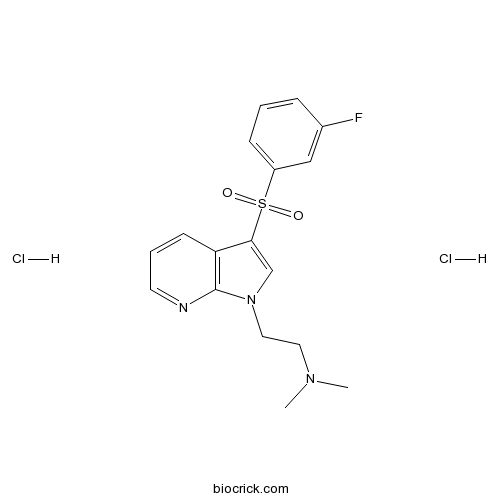GPCR/G protein
G protein–coupled receptors (GPCRs) which are also known as seven-transmembrane domain receptors, 7TM receptors, heptahelical receptors, serpentine receptor, and G protein–linked receptors (GPLR), constitute a large protein family of receptors, that detect molecules outside the cell and activate internal signal transduction pathways and, ultimately, cellular responses. Coupling with G proteins, they are called seven-transmembrane receptors because they pass through the cell membrane seven times.
Products for GPCR/G protein
- GIP Receptor(2)
- FFAR1 (GPR40)(7)
- 5-HT Receptor(238)
- Urotensin-II Receptor(10)
- CCK2 Receptors(7)
- P2Y Receptor(25)
- EP4 Receptor(3)
- CRF1 Receptors(6)
- Melatonin Receptors(9)
- LPL Receptor(1)
- Adenosine Receptor(54)
- VIP Receptors(7)
- OX Receptor(15)
- Chemokine Receptors(16)
- Neurotensin Receptors(7)
- Prostanoid Receptors(21)
- CCK1 Receptors(5)
- Adrenergic Receptor(136)
- GPR119(5)
- Calcium-Sensing Receptor(3)
- Cannabinoid Receptor(36)
- Angiotensin Receptor(21)
- GPR120(2)
- Protease-Activated Receptors(9)
- PAF Receptors(3)
- Sigma Receptor(24)
- NK3 Receptor(6)
- NPY Receptors(23)
- Glucagon Receptor(16)
- Leukotriene Receptor(9)
- Bombesin Receptors(14)
- Sphingosine(14)
- CXCR(16)
- NOP Receptor(21)
- GPR55(5)
- Galanin Receptors(11)
- Endothelin Receptor(11)
- GPR35(7)
- Glucocorticoid Receptor(17)
- Calcitonin and Related Receptors(10)
- Bradykinin Receptors(12)
- mGluR(11)
- Adenosine Kinase(2)
- GPR109A(2)
- GPCR19(1)
- Non-selective CRF(7)
- LTD4 Receptor(1)
- Secretin Receptors(1)
- Melanocortin (MC) Receptors(16)
- ETB Receptors(5)
- NK2 Receptors(7)
- LPA Receptor(5)
- S1P receptor inhibitor(5)
- CCR2(5)
- Hydroxycarboxylic Acid Receptors(5)
- PACAP Receptors(3)
- Melanin-concentrating Hormone Receptors(7)
- Vasopressin Receptor(10)
- Somatostatin Receptor(15)
- TSH Receptor(1)
- Peptide Receptors(8)
- Ghrelin Receptors(9)
- ETA Receptors(3)
- Orphan 7-TM Receptors(6)
- Oxytocin Receptors(4)
- Ras(6)
- Heterotrimeric(1)
- CysLT1 receptor(1)
- Motilin Receptor(4)
- Acetylcholine(3)
- Prostaglandin Receptor(4)
- GHSR(4)
- EBI2/GPR183(1)
- Gonadotropin-Releasing Hormone Receptors(3)
- Orexin(3)
- Apelin Receptor(5)
- CRF2 Receptors(3)
- Calcimimetic Agent(2)
- Adrenergic Transporters(5)
- CaSR(3)
- EP1 Receptor(1)
- Sensory Neuron-Specific Receptors(1)
- 17,20-lyase(3)
- Adenosine Deaminase(3)
- NK Receptor(1)
- PGD2 Receptor(1)
- GLUT1(1)
- RGS(2)
- GPR44(1)
- Adiponectin Receptor(1)
- ERRγ(1)
- Cat.No. Product Name Information
-
BCC5870
GIP (human)
Gastric Inhibitory Peptide (GIP), human is thought to act as an inhibitor of gastric functions.
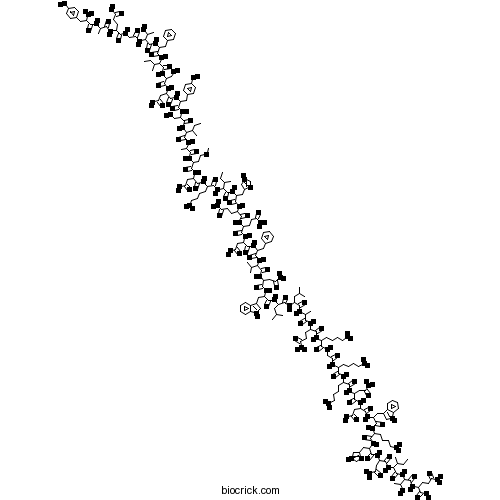
-
BCC3702
TAK-875
Fasiglifam (TAK-875) is a potent, selective and orally bioavailable GPR40 agonist with EC50 of 72 nM.
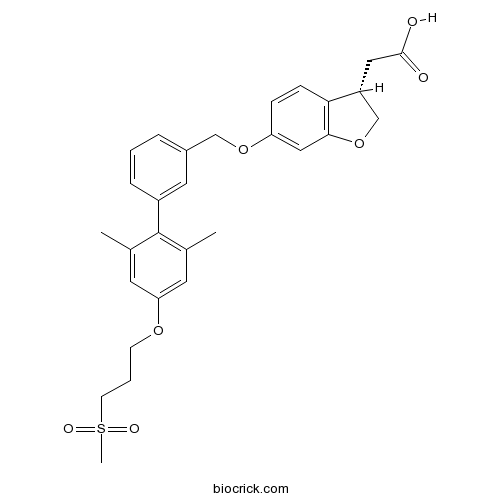
-
BCC7218
AS 19
AS19 is a potent, selective 5-HT7 receptor agonist with an IC50 value of 0.83 nM and a Ki of 0.6 nM. AS19 is selective for 5-HT7 over 5-HT1A, 5-HT1B, 5-HT1D, and 5-HT5A receptors (Kis = 89.7 nM, 490 nM, 6.6 nM and 98.5 nM, respectively). AS19 enhances memory consolidation and reverses Scopolamine- or Dizocilpine-induced amnesia.
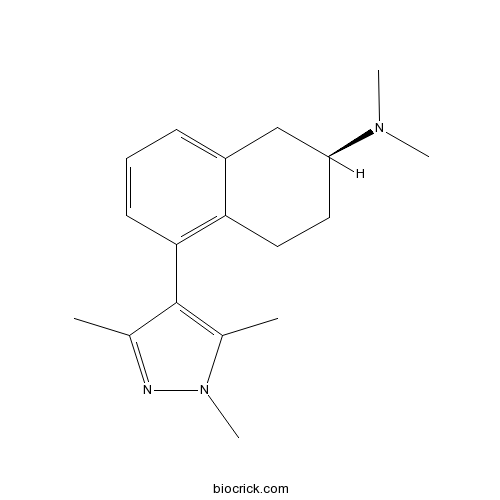
-
BCC8010
GSK 1562590 hydrochloride
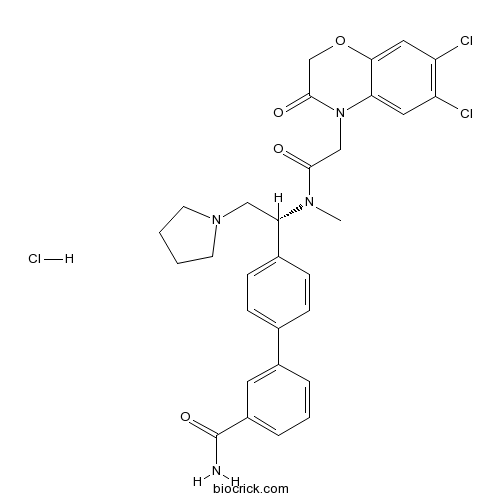
-
BCC5958
Gastrin I (human)
Gastrin-1, human is the endogenous peptide produced in the stomach, and increases gastric acid secretion via cholecystokinin 2 (CCK2) receptor.

-
BCC7804
NF 546
NF546 is a selective non-nucleotide P2Y11 agonist with a pEC50 of 6.27. NF546 stimulates release of interleukin-8 from human monocyte-derived dendritic cells.
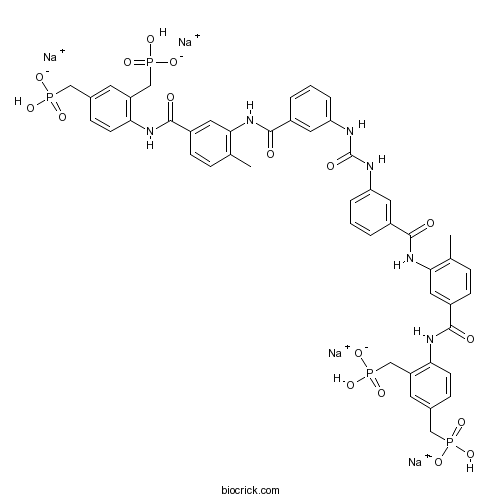
-
BCC1757
MK-2894
MK-2894 is a highly potent and selective second generation EP4 antagonist.
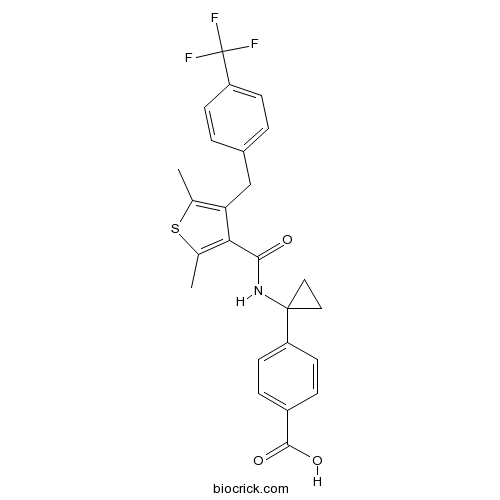
-
BCC1758
MK-2894 sodium salt
MK-2894 sodium salt is a highly potent and selective second generation EP4 antagonist.
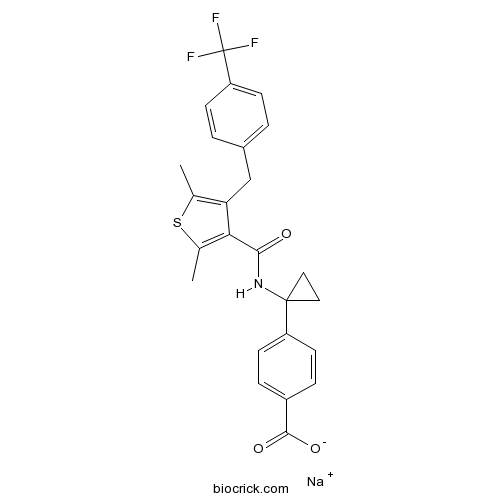
-
BCC7178
Zacopride hydrochloride
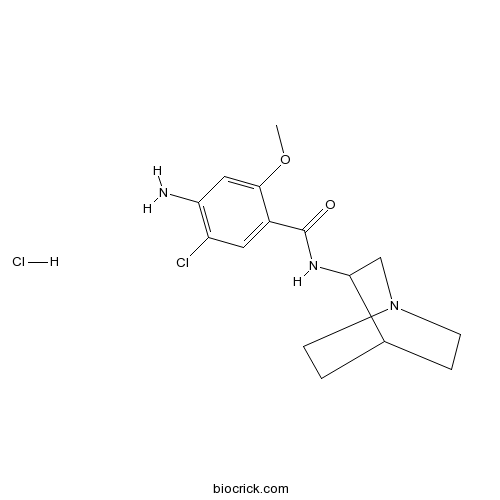
-
BCC7604
CP 376395 hydrochloride
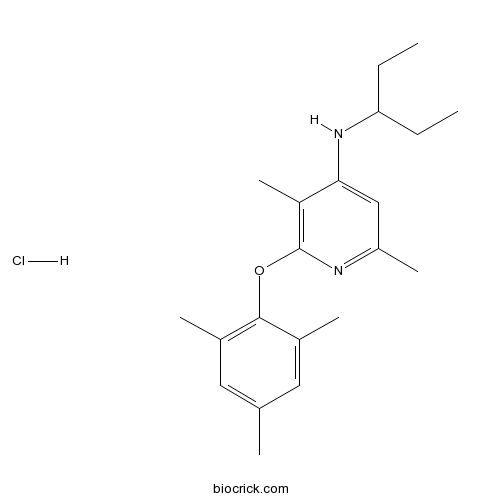
-
BCC6618
N-Acetyltryptamine
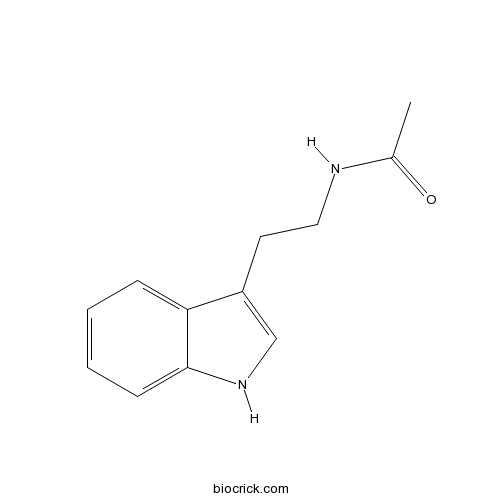
-
BCC5438
LPA2 antagonist 1
LPA2 antagonist 1 is a LPA2 antagonist with an IC50 of 17 nM.
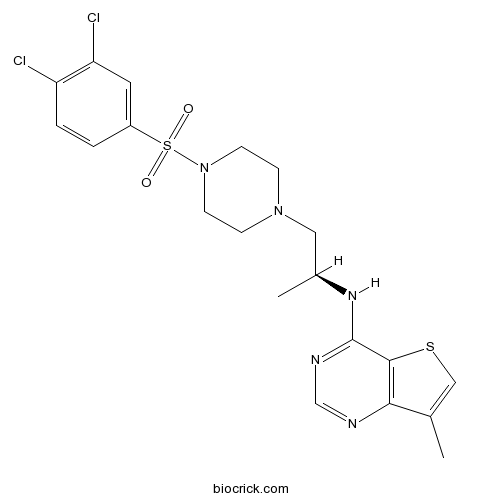
-
BCC6649
DPCPX
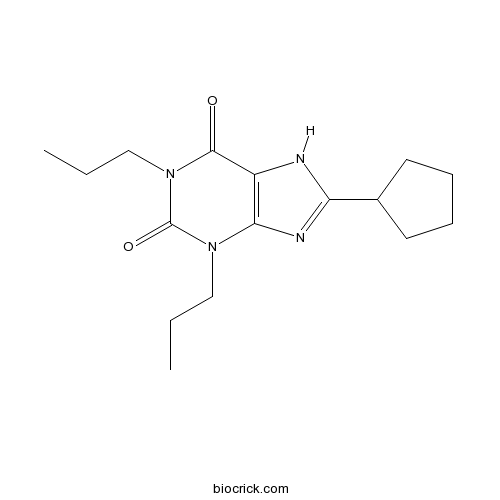
-
BCC7599
PSB 0788
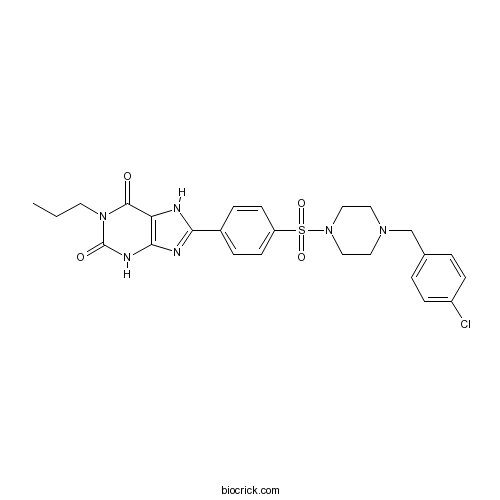
-
BCC5968
[D-p-Cl-Phe6,Leu17]-VIP
![[D-p-Cl-Phe6,Leu17]-VIP](/media/images/struct/BCC5968.png)
-
BCC1760
MK-4305
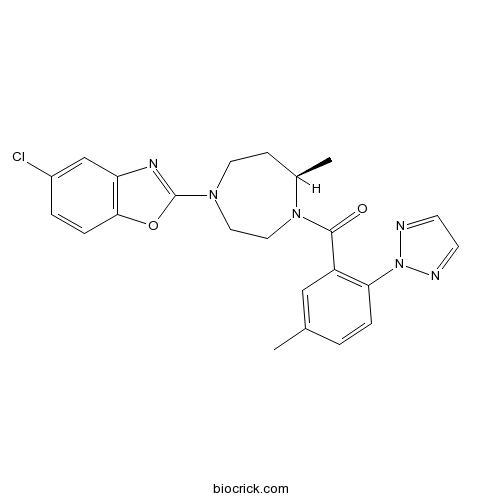
-
BCC6366
CTCE 9908
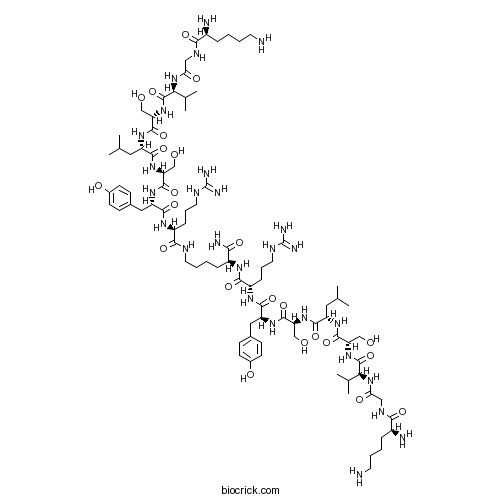
-
BCC5845
Kinetensin (human)
Kinetensin is a neurotensin-like peptide isolated from pepsin-treated human plasma.
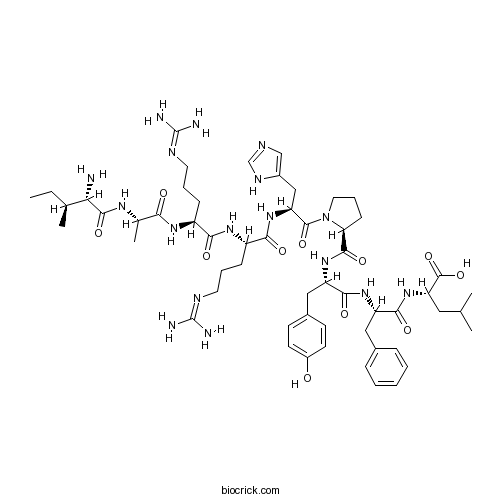
-
BCC7156
L-655,240
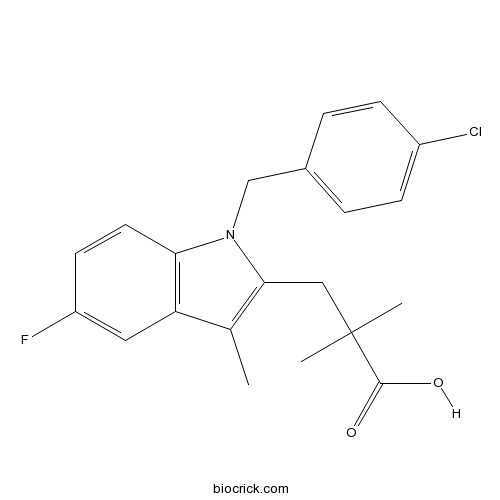
-
BCC3786
GSK1292263
GSK1292263 is a novel GPR119 receptor agonist used for the treatment of type 2 diabetes.
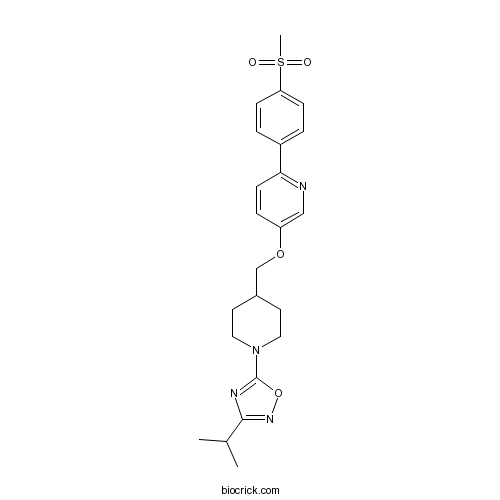
-
BCC7319
Devazepide
Devazepide (L-364,718) is a potent, competitive, selective and orally active nonpeptide antagonist of cholecystokinin (CCK) receptor, with IC50s of 81 pM, 45 pM and 245 nM for rat pancreatic, bovine gallbladder and guinea pig brain CCK receptors, respectively. Devazepide (L-364,718) is effective for gastrointestinal disorders.
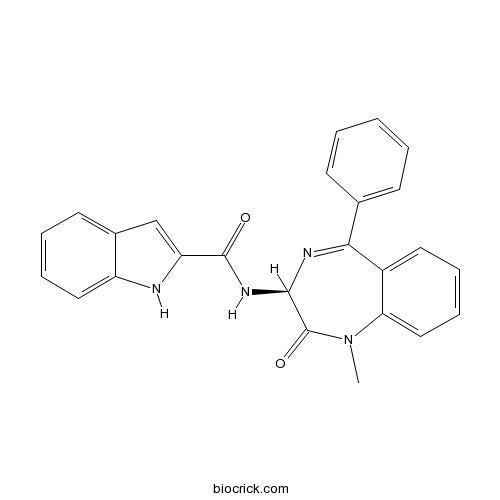
-
BCC4329
Maprotiline HCl
Maprotiline hydrochloride is a selective noradrenalin re-uptake inhibitor and a tetracyclic antidepressant.
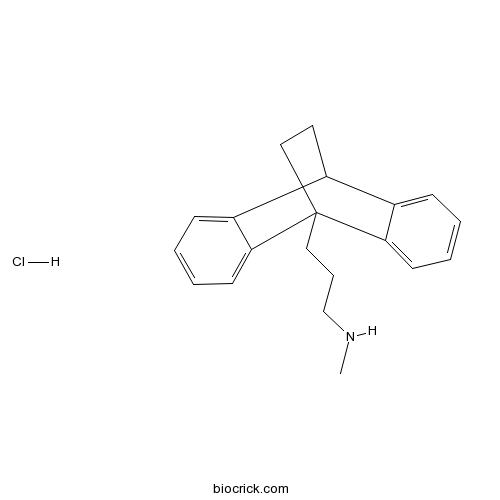
-
BCC7716
(±)-5'-Chloro-5'-deoxy-ENBA
Highly selective A1 agonist
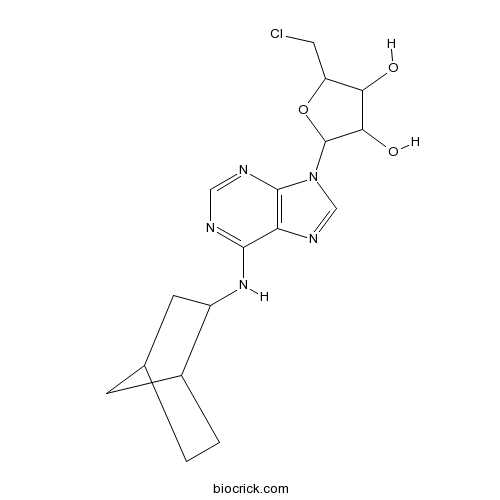
-
BCC1732
MBX-2982
MBX-2982 is a selective, orally-available G protein-coupled receptor 119 (GPR119) agonist.
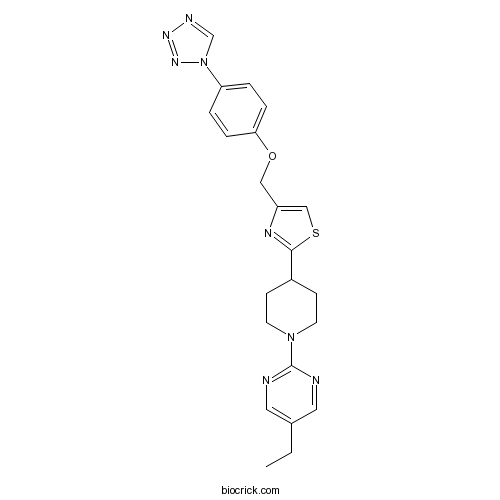
-
BCC7521
Atipamezole hydrochloride
Atipamezole hydrochloride is a synthetic α2-adrenoceptor antagonist with a Ki of 1.6 nM.
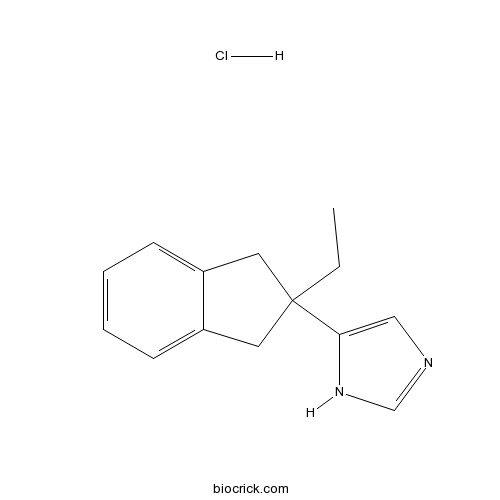
-
BCC4344
Bisoprolol fumarate
(±)-Bisoprolol (hemifumarate) is a selective type β1 adrenergic receptor blocker.
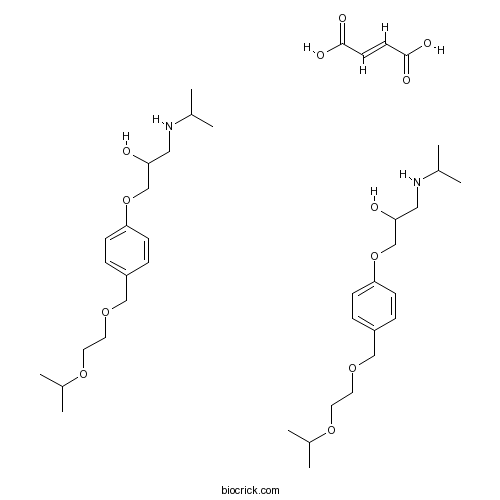
-
BCC7157
CGS 15943
CGS 15943 is an orally bioavailable non-xanthine Adenosine Receptor antagonist. Its Ki for human A1, A2A, A2B, and A3 Adenosine Receptors are 3.5, 4.2, 16, and 50 nM in transfected CHO cells, respectively. .
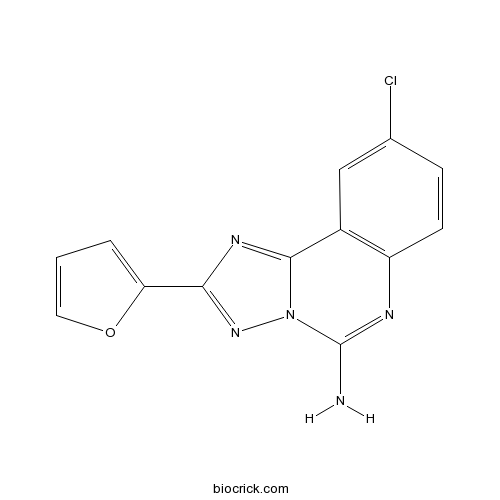
-
BCC7973
Strontium chloride
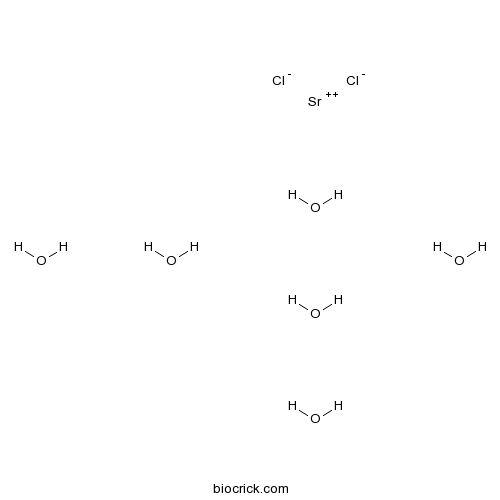
-
BCC7800
MRS 2768 tetrasodium salt
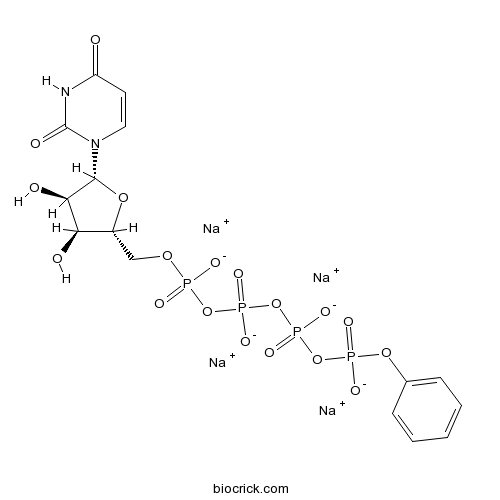
-
BCC6282
COR 170
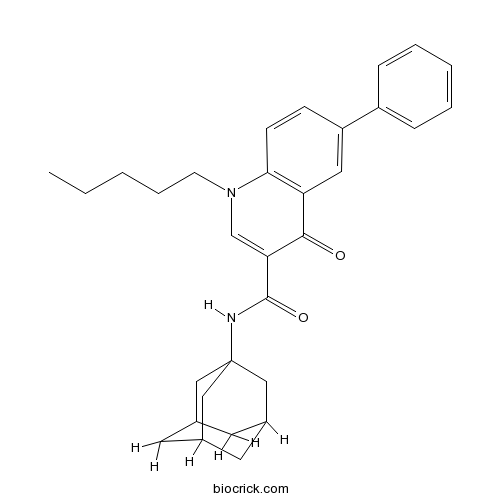
-
BCC4091
Tranilast Sodium
Tranilast is an antiallergic agent.
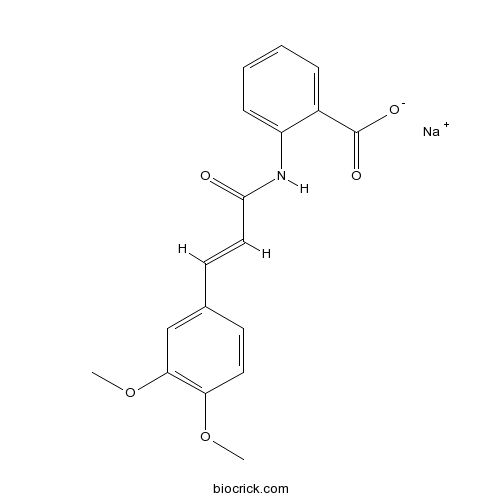
-
BCC1599
GPR120 modulator 1
GPR120 modulator 1 is useful for modulating G protein-coupled receptor 120 (GPR120).
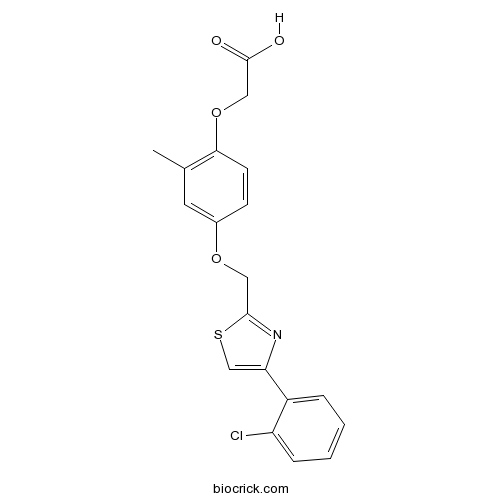
-
BCC1600
GPR120 modulator 2
GPR120 modulator 2 is useful for modulating G protein-coupled receptor 120 (GPR120).
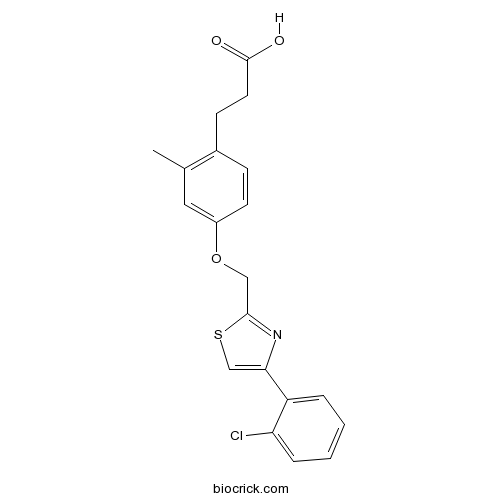
-
BCC6281
Q94 hydrochloride
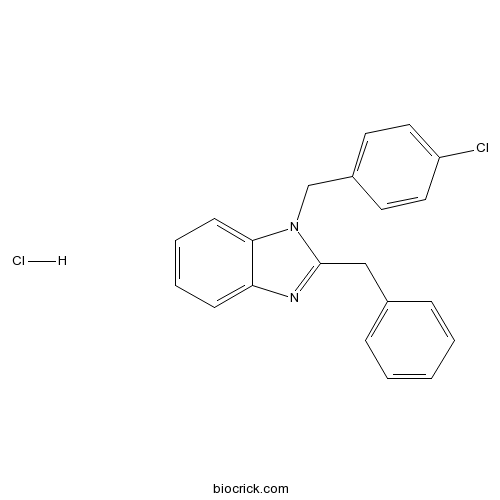
-
BCC6095
PSB 0739
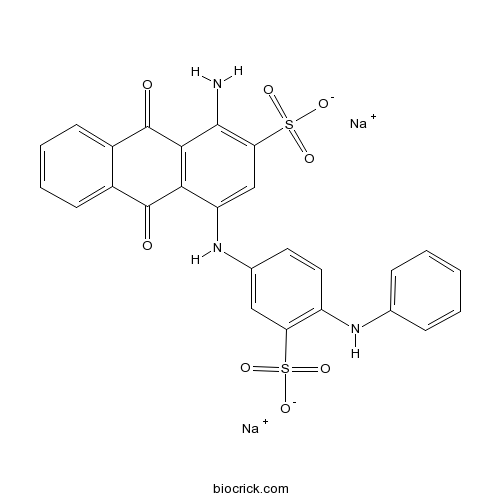
-
BCC7335
WEB 2086
Apafant (WEB 2086), a potent platelet-activating factor (PAF) antagonist, inhibits PAF binding to human PAF receptors with a Ki of 9.9 nM.
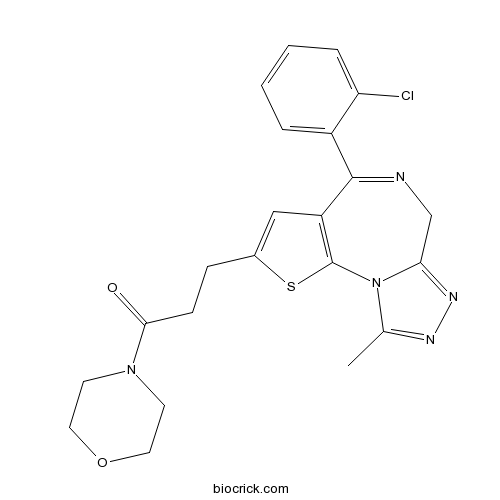
-
BCC6728
Spiroxatrine
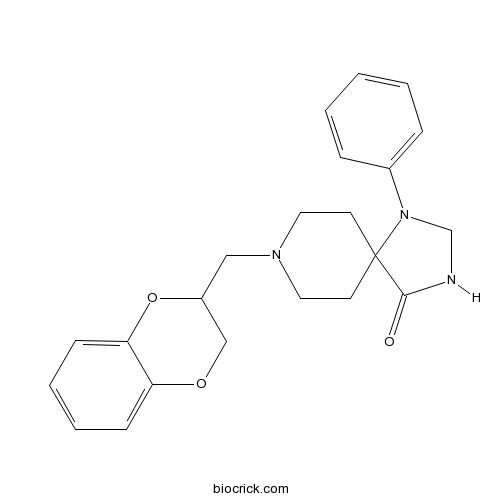
-
BCC5759
BMY 14802 hydrochloride
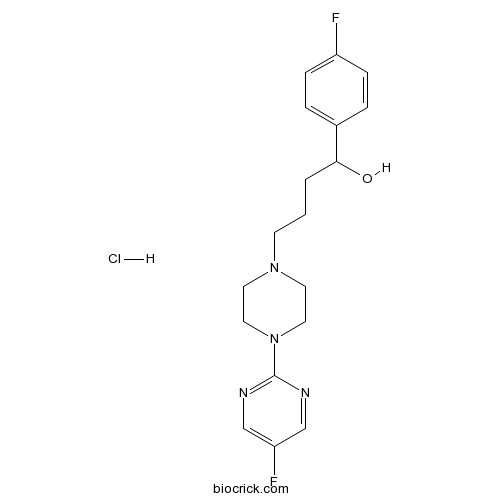
-
BCC6921
Senktide
Senktide is a tachykinin NK3 receptor agonist.
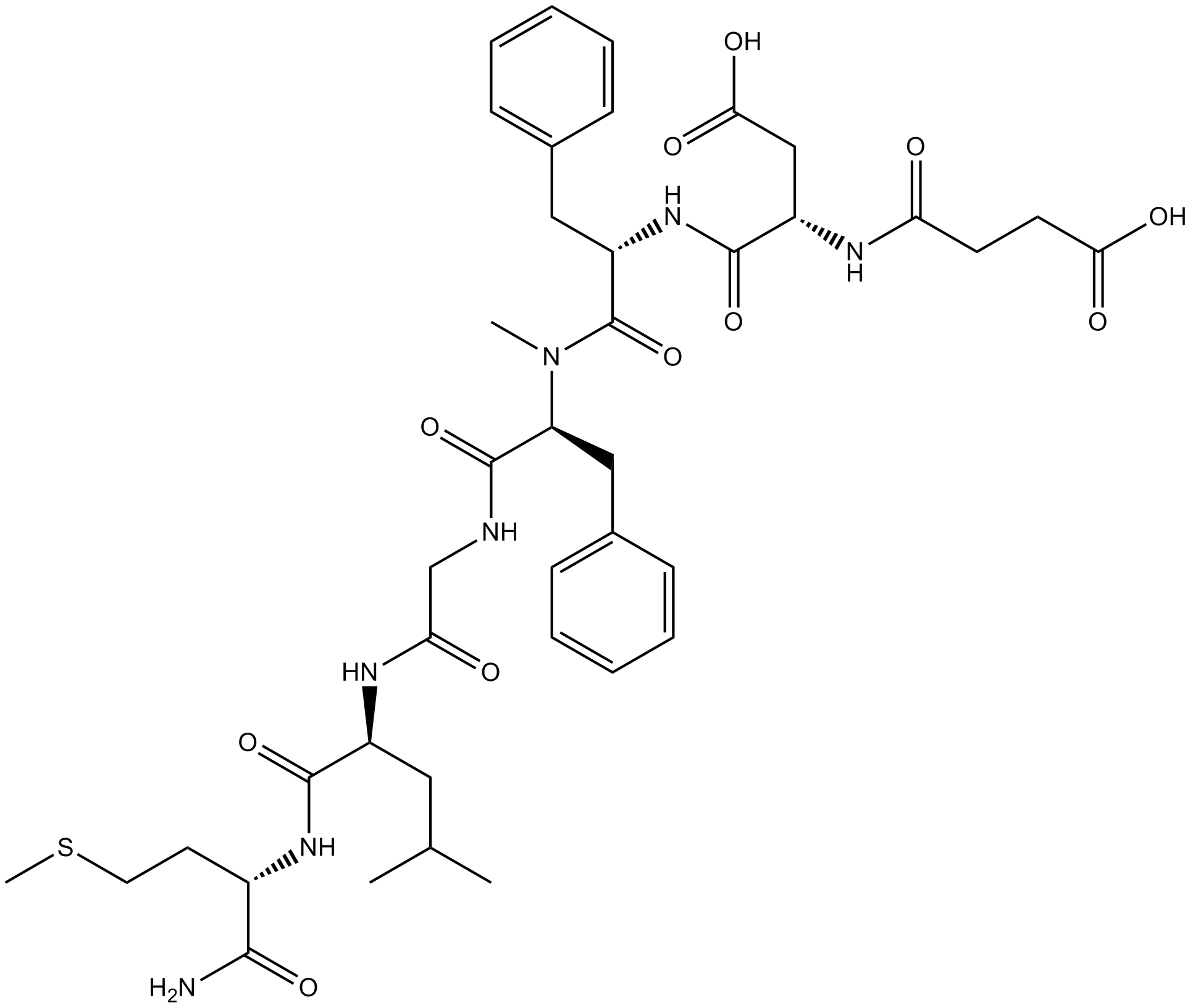
-
BCC6165
TC-G 1004
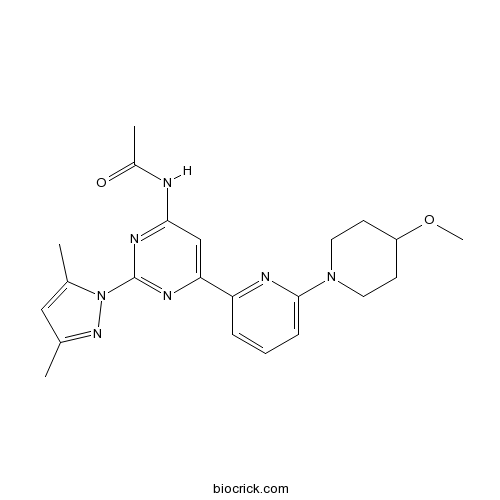
-
BCC5909
DAPTA
DAPTA is a synthetic peptide, functions as a viral entry inhibitor by targeting selectively CCR5, and shows potent anti-HIV activities.
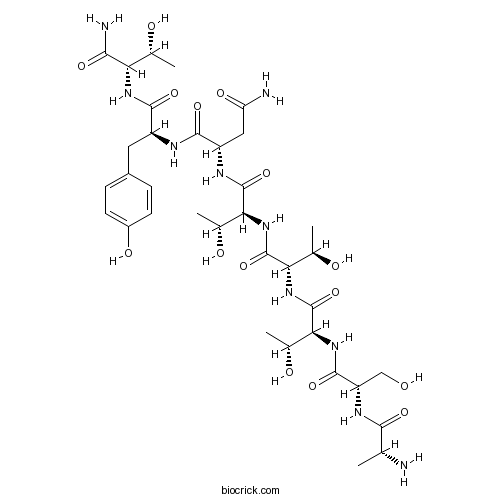
-
BCC6041
Parstatin (human)
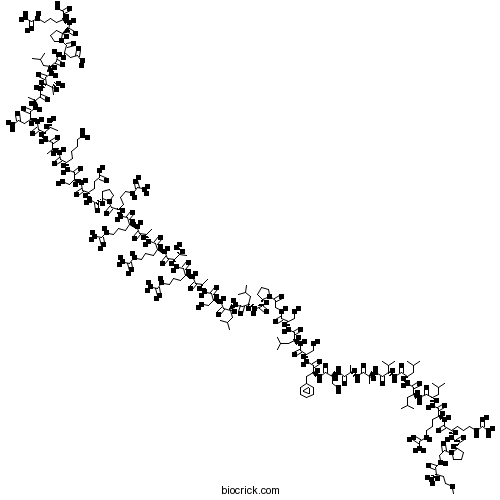
-
BCC6042
Parstatin (mouse)
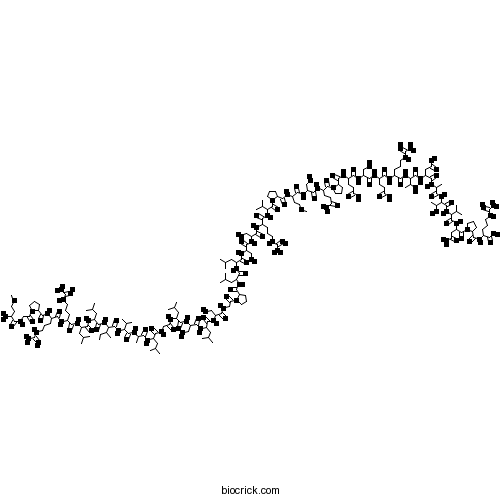
-
BCC7456
BIBP 3226 trifluoroacetate
BIBP3226 TFA is a potent and selective neuropeptide Y Y1 (NPY Y1) and neuropeptide FF (NPFF) receptor antagonist, with Kis of 1.1, 79, and 108 nM for rNPY Y1, hNPFF2, and rNPFF, respectively. BIBP3226 TFA displays anxiogenic-like effect.
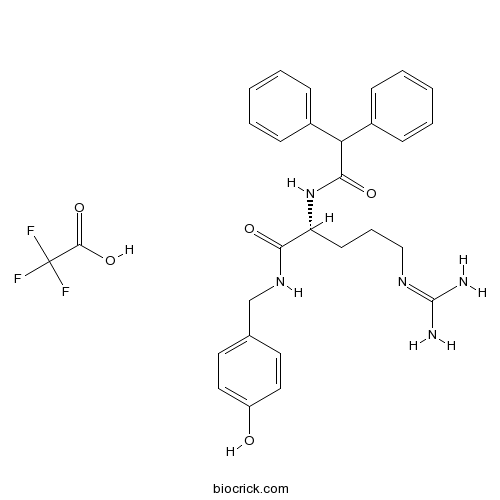
-
BCC7258
Glucagon-like peptide 1 (7-36) amide (human, rat)
Glucagon-Like Peptide (GLP) I (7-36), amide, human (Human GLP-1-(7-36)-amide) is a physiological incretin hormone that stimulates insulin secretion.

-
BCC6822
MDL 11,939
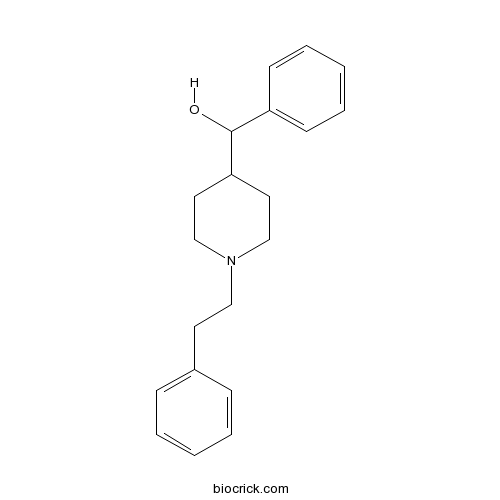
-
BCC4881
Zafirlukast
Zafirlukast is a potent orally active leukotriene D4 (LTD4) receptor antagonist.
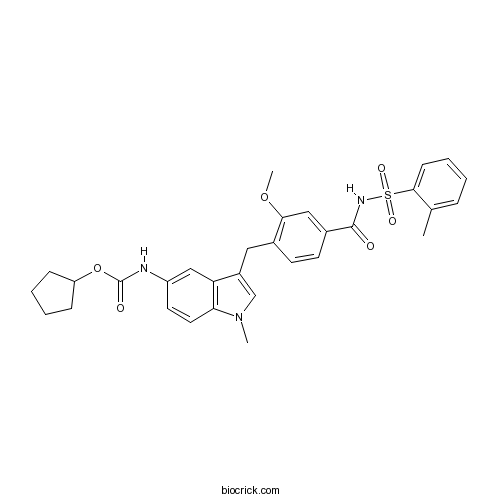
-
BCC6912
A 61603 hydrobromide
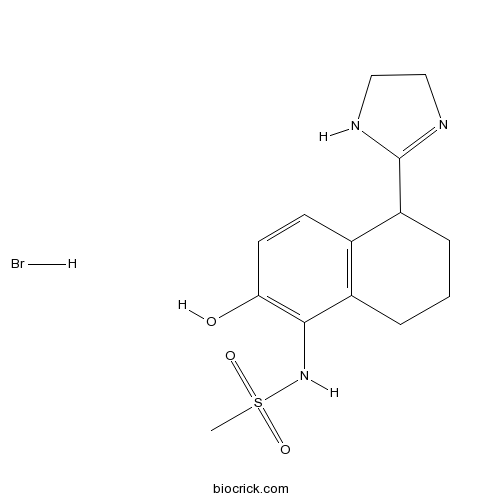
-
BCC6299
PF 04418948
PF-04418948 is an orally active, potent and selective prostaglandin EP2 receptor antagonist with an IC50 of 16 nM.
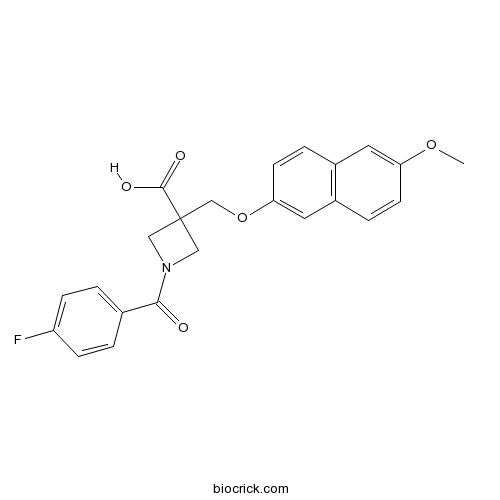
-
BCC5844
[D-Phe12]-Bombesin
![[D-Phe12]-Bombesin](/media/images/struct/BCC5844.png)
-
BCC6020
[D-Phe12,Leu14]-Bombesin
![[D-Phe12,Leu14]-Bombesin](/media/images/struct/BCC6020.png)
-
BCC7598
PSB 603
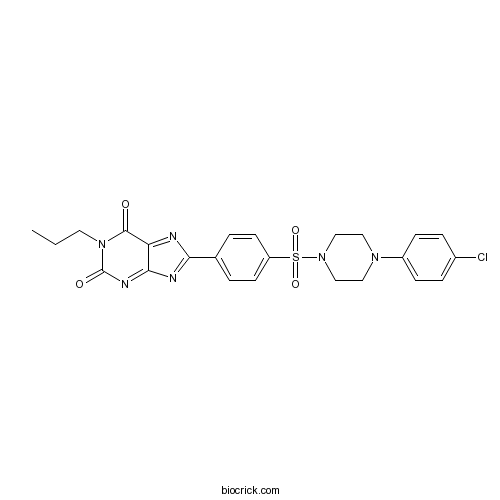
-
BCC6234
IT1t dihydrochloride
IT1t dihydrochloride is a potent CXCR4 antagonist; inhibits CXCL12/CXCR4 interaction with an IC50 of 2.1 nM.
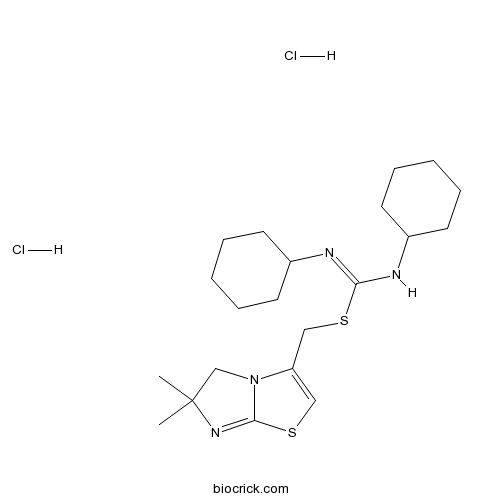
-
BCC7722
CYM 5442 hydrochloride
CYM5442 is a potent, highly-selective and orally active sphingosine 1-phosphate (S1P1) receptor agonist with an EC50 of 1.35 nM. CYM5442 is inactive against S1P2, S1P3, S1P4, and S1P5. CYM5442 activates S1P1-dependent p42/p44-MAPK phosphorylation. CYM5442 exerts retinal neuroprotection. CYM5442 can easily penetrate the central nervous system (CNS).
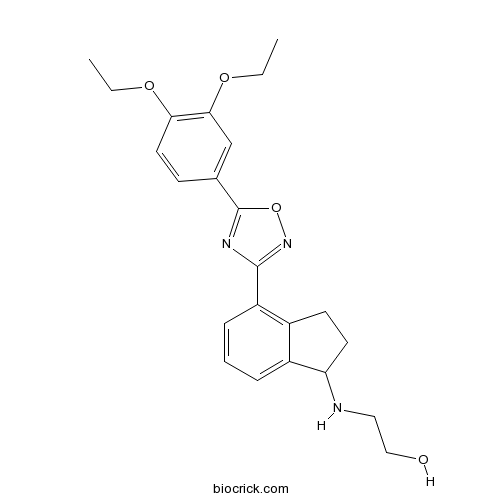
-
BCC7021
RX 821002 hydrochloride
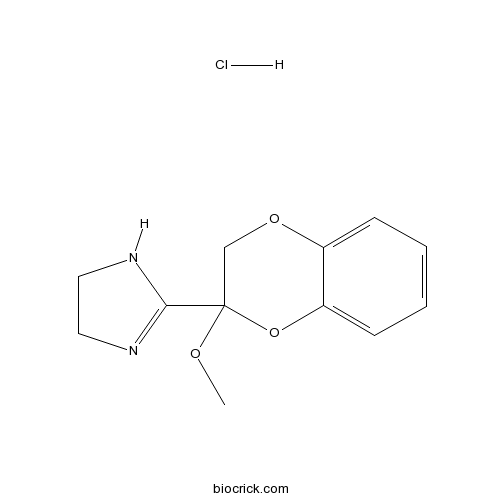
-
BCC1158
Plerixafor (AMD3100)
Plerixafor (AMD 3100) is a selective CXCR4 antagonist with an IC50 of 44 nM. Plerixafor, an immunostimulant and a hematopoietic stem cell (HSC) mobilizer, is an allosteric agonist of CXCR7. Plerixafor inhibits HIV-1 and HIV-2 replication with an EC50 of 1-10 nM.
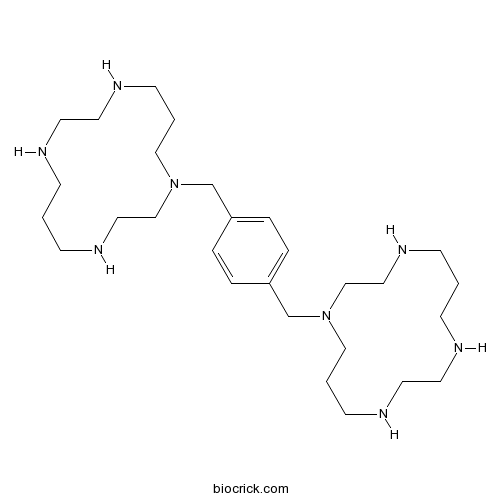
-
BCC5885
des-His1-[Glu9]-Glucagon (1-29) amide
![des-His1-[Glu9]-Glucagon (1-29) amide](/media/images/struct/BCC5885.png)
-
BCC4161
MCOPPB trihydrochloride
MCOPPB 3Hcl is a nociceptin receptor agonist with pKi of 10.07; weaker activity at other opioid receptors.
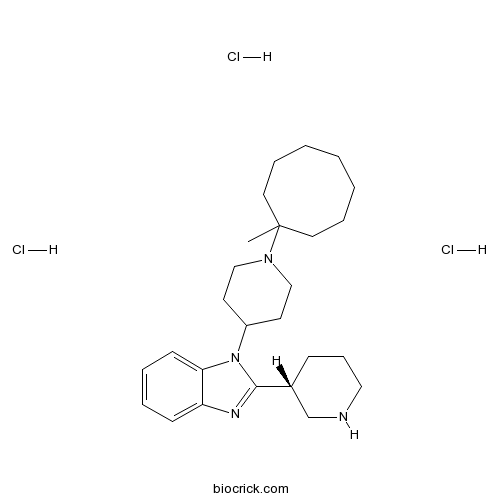
-
BCC7084
Oleylethanolamide
Oleoylethanolamide is a high affinity endogenous PPAR-α agonist, which plays an important role in the treatment of obesity and arteriosclerosis.
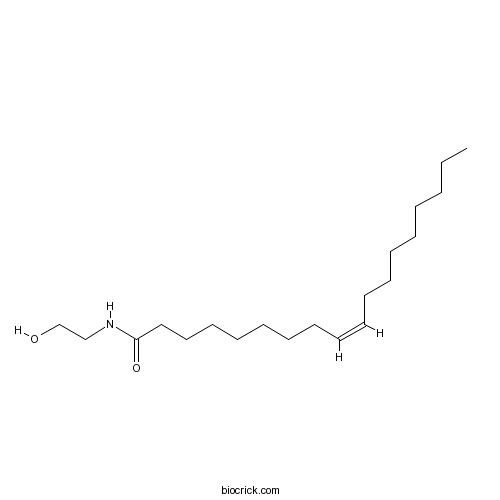
-
BCC5998
BIM 23042
Selective neuromedin B receptor antagonist (NMB-R, BB1)
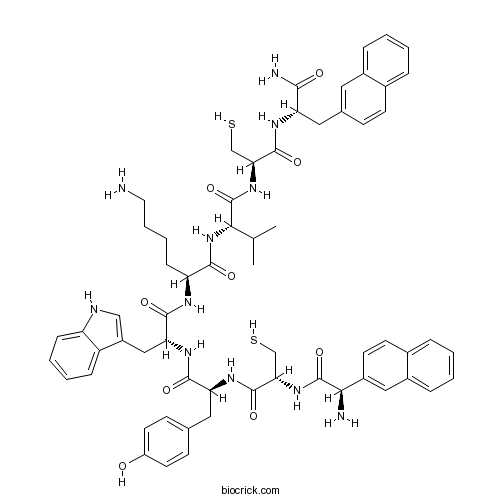
-
BCC5762
Galanin (1-15) (porcine, rat)
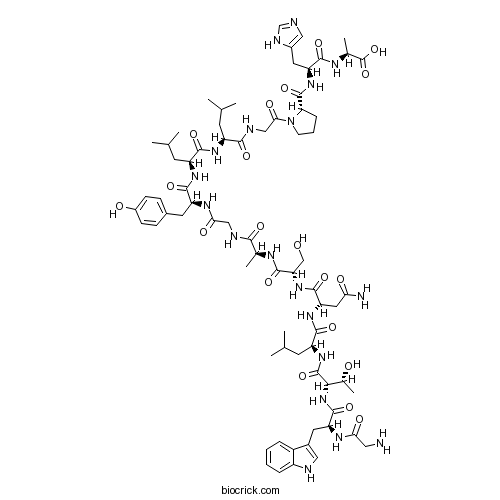
-
BCC6947
(S)-(+)-Niguldipine hydrochloride
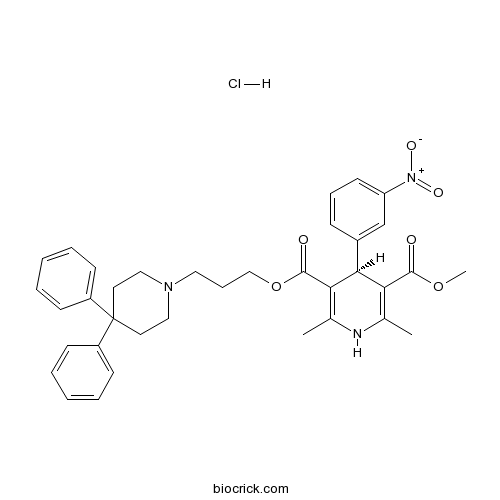
-
BCC7094
SR 59230A hydrochloride
SR59230A hydrochloride is a potent, selective, and blood-brain barrier penetrating β3-adrenergic receptor antagonist with IC50s of 40, 408, and 648 nM for β3, β1, and β2 receptors, respectively.
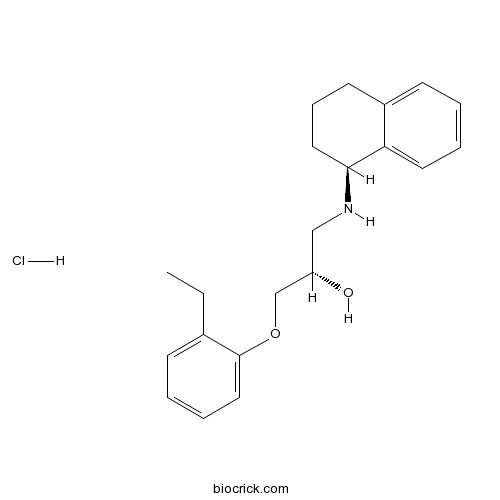
-
BCC7183
Altanserin hydrochloride
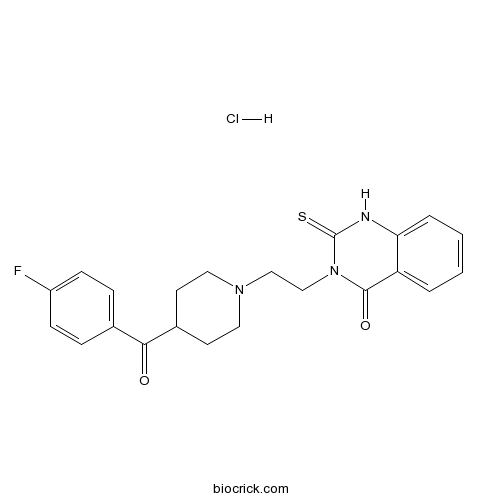
-
BCC6959
Neuropeptide Y 13-36 (porcine)

-
BCC4326
Dexmedetomidine
Dexmedetomidine is a sedative medication used by intensive care units and anesthetists.
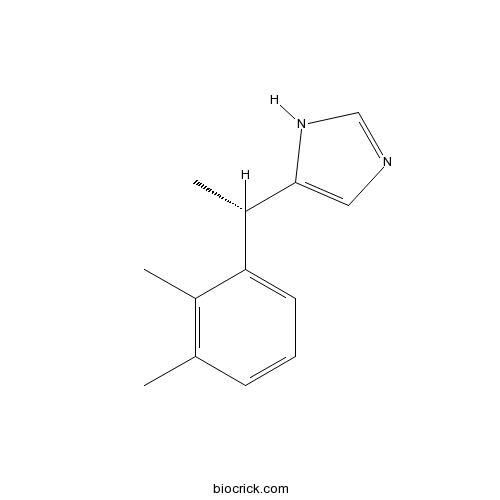
-
BCC5928
Galanin (1-29) (rat, mouse)

-
BCC4090
Losartan
Losartan is an angiotensin II receptor antagonist, competing with the binding of angiotensin II to AT1 receptors with IC50 of 20 nM.
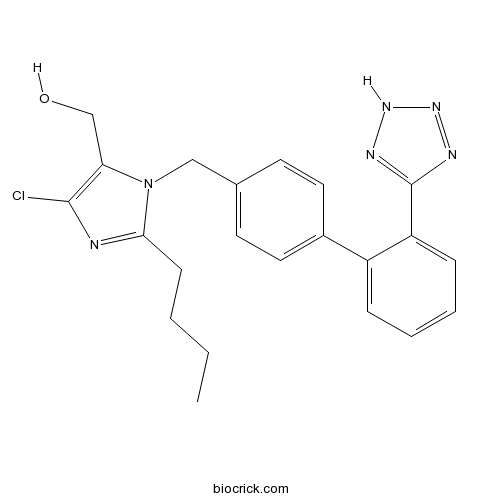
-
BCC8076
MK-571 sodium salt hydrate
MK-571 sodium salt is a selective, orally active leukotriene D4 receptor antagonist, with Kis of 0.22 and 2.1 nM in guinea pig and human lung membranes.
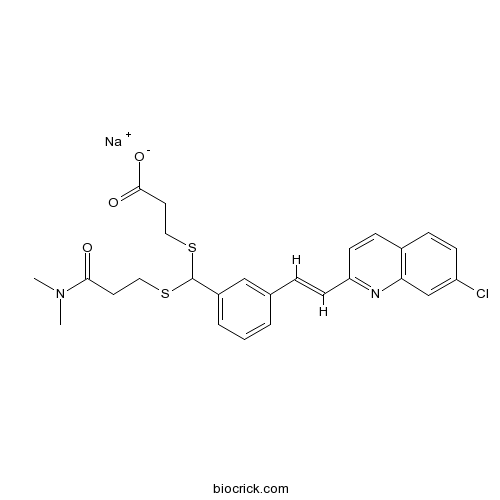
-
BCC7334
MK 571
MRP1 inhibitor; also CysLT1 (LTD4) inverse agonist
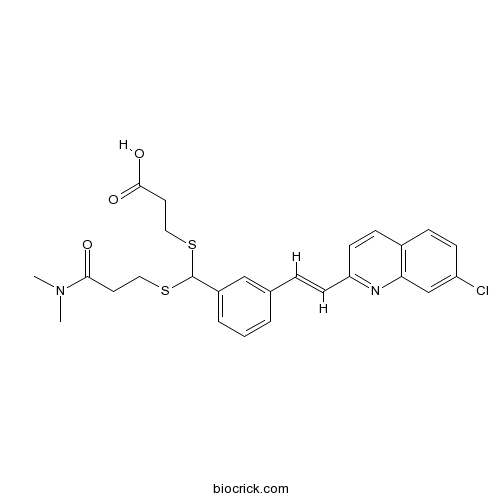
-
BCC5720
Sarafotoxin S6b

-
BCC7876
ML 145
ML 145 is a selective GPR35/CXCR8 antagonist with an IC50/EC50 of 20.1 nM, but not for the related GPR55 orphan receptor. GPR35 is expressed by various cells of the immune system and it may has potential as a therapeutic target in inflammatory disease.
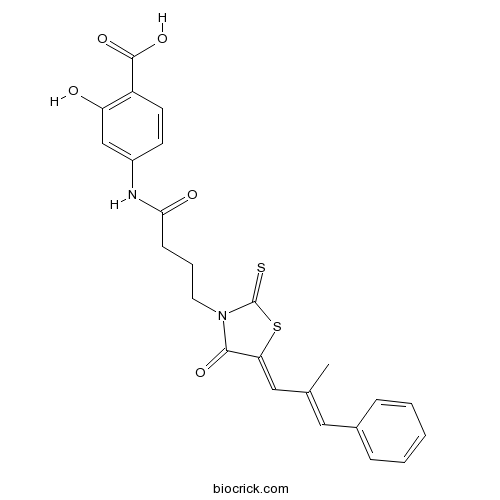
-
BCC6053
M 1145
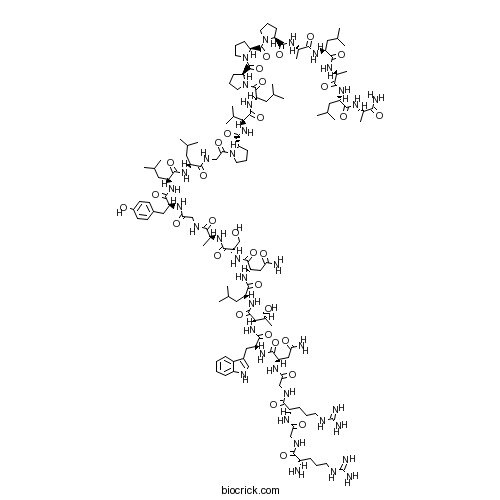
-
BCC7260
RS 102895 hydrochloride
RS102895 hydrochloride is a potent CCR2 antagonist, with an IC50 of 360 nM, and shows no effect on CCR1.
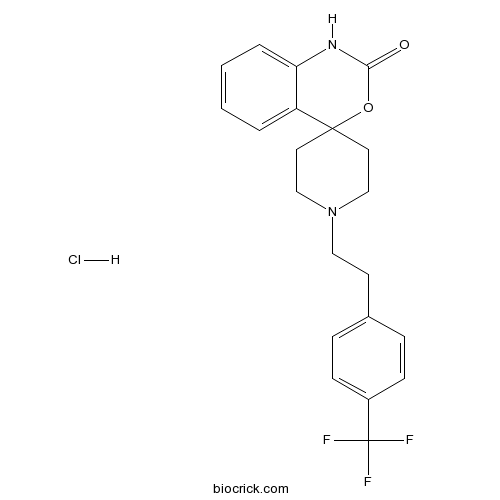
-
BCC5713
Endothelin 3 (human, rat)
Endothelin-3, human, mouse, rabbit, rat is a 21-amino acid vasoactive peptide that binds to G-protein-linked transmembrane receptors, ET-RA and ET-RB.

-
BCC5876
Xenin 8
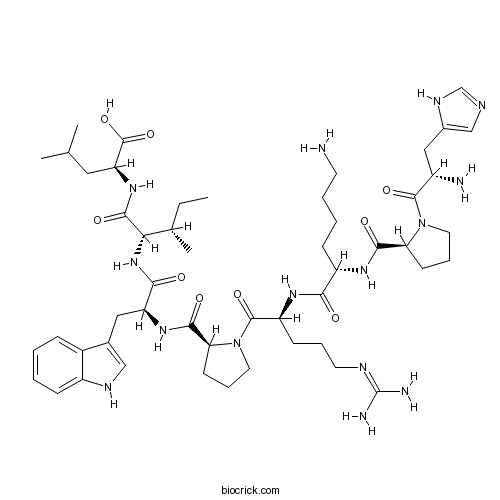
-
BCC7290
LY 255283
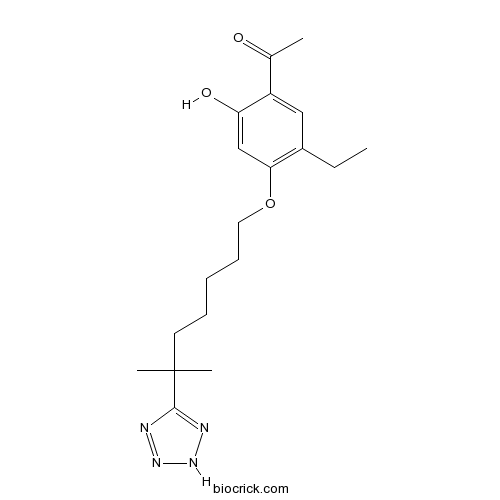
-
BCC4775
Dexamethasone acetate
Dexamethasone acetate (Dexamethasone 21-acetate) is a glucocorticoid receptor agonist. Dexamethasone acetate has the potential for ophthalmic infections treatment.
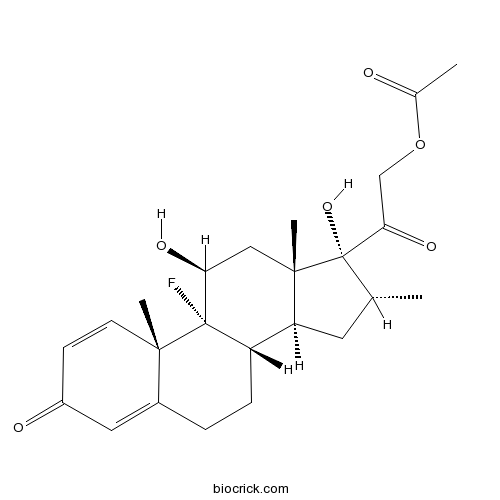
-
BCC7338
CGH 2466 dihydrochloride
Anti-inflammatory agent. Inhibitor of PDE4 and p38 MAPK, also adenosine receptor antagonist
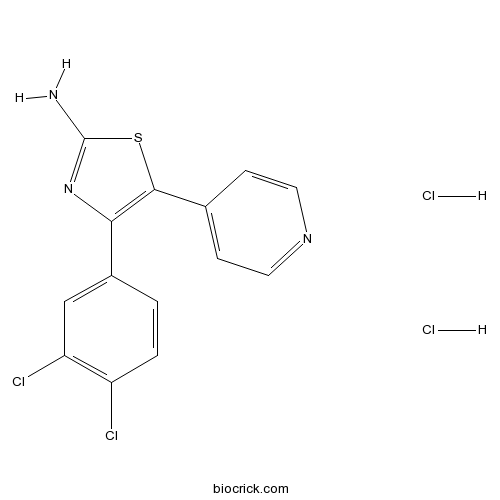
-
BCC6826
Luzindole
Luzindole (N-0774) is a selective melatonin receptor antagonist. Luzindole preferentially targets MT2 (Mel1b) over MT1 (Mel1a) with Ki values of 10.2 and 158 nM for human MT2 and MT1, respectively. Luzindole suppresses experimental autoimmune encephalomyelitis (EAE), and exerts antidepressant-like activity.
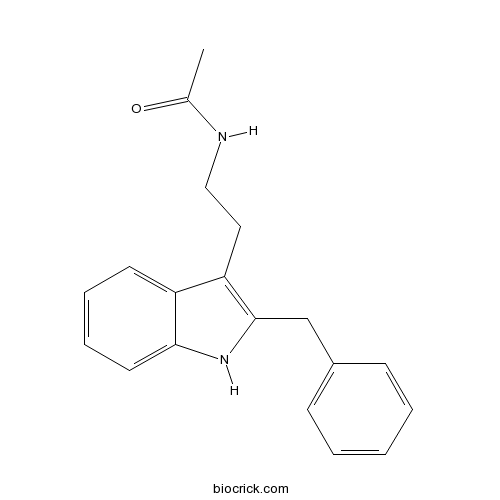
-
BCC5869
PHM 27 (human)
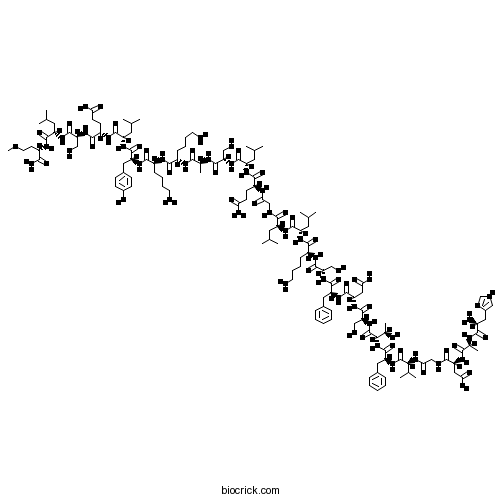
-
BCC7477
L-365,260
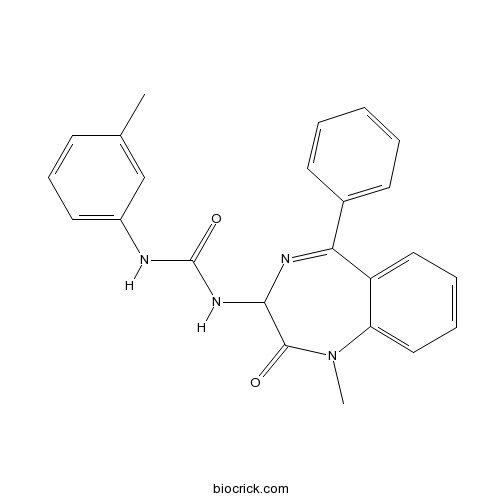
-
BCC5995
[Phe8Ψ(CH-NH)-Arg9]-Bradykinin
![[Phe8Ψ(CH-NH)-Arg9]-Bradykinin](/media/images/struct/BCC5995.png)
-
BCC7517
LP 12 hydrochloride
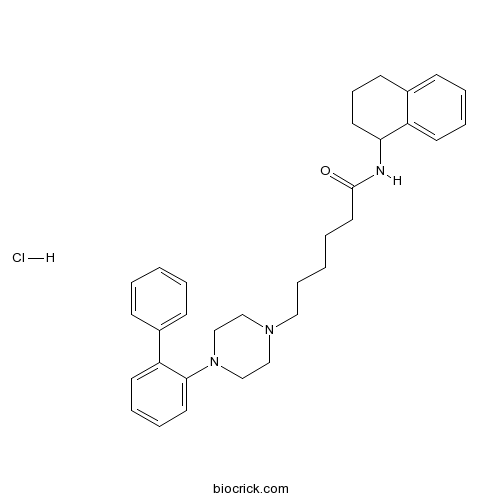
-
BCC7401
Tocrifluor T1117
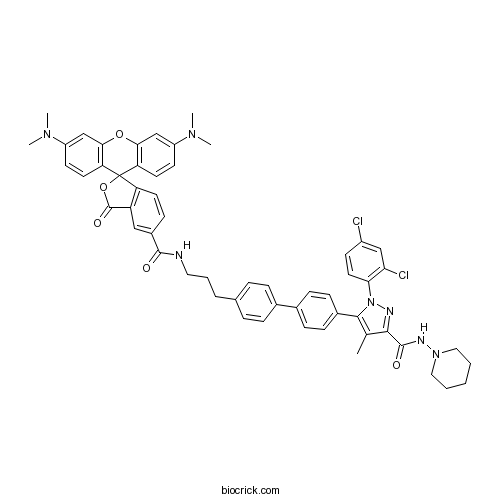
-
BCC1780
MTEP hydrochloride
MTEP hydrochloride is a potent, selective and non-competitive mGlu5 antagonist with an IC50 of 5 nM and a Ki of 16 nM. MTEP hydrochloride produces antiparkinsonian-like effects.
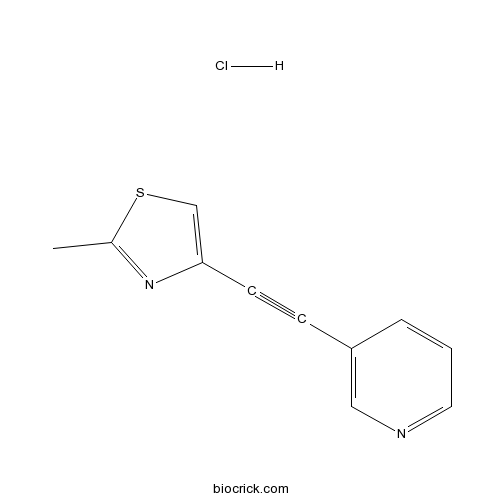
-
BCC5905
ABT 702 dihydrochloride
ABT-702 dihydrochloride is a potent adenosine kinase (AK) inhibitor (IC50=1.7 nM).
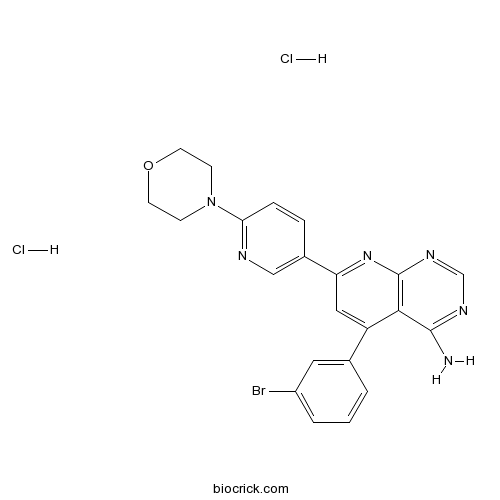
-
BCC6961
Galanin (1-30) (human)
Galanin (1-30), human is a 30-amino acid neuropeptide, and acts as an agonist of GalR1 and GalR2 receptors, with Kis of both 1 nM.
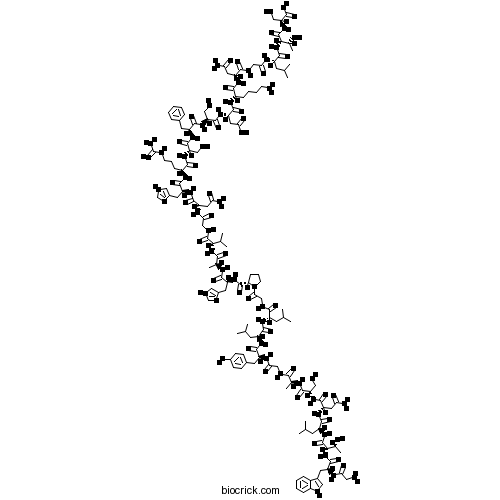
-
BCC7959
N,N-Dimethylsphingosine
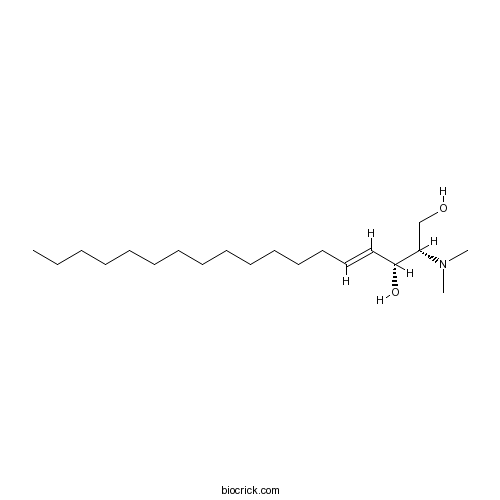
-
BCC4987
PF-05212384 (PKI-587)
Gedatolisib (PKI-587) is a highly potent dual inhibitor of PI3Kα, PI3Kγ, and mTOR with IC50s of 0.4 nM, 5.4 nM and 1.6 nM, respectively. PKI-587 is equally effective in both complexes of mTOR, mTORC1 and mTORC2.
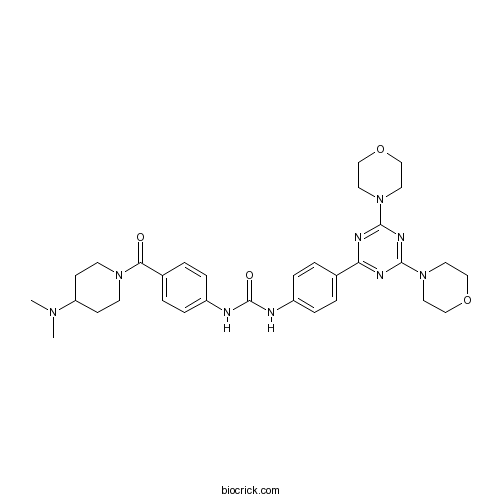
-
BCC7246
SDZ 205-557 hydrochloride
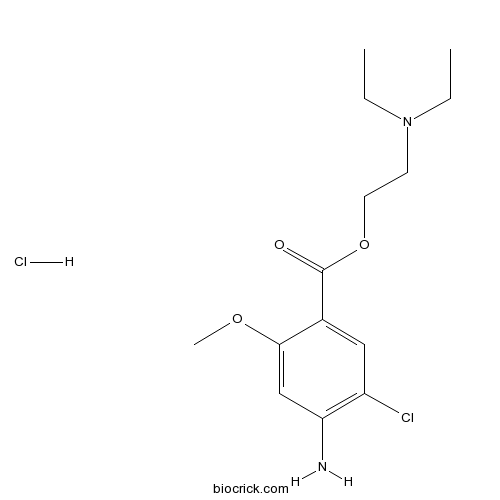
-
BCC7143
SB 206553 hydrochloride
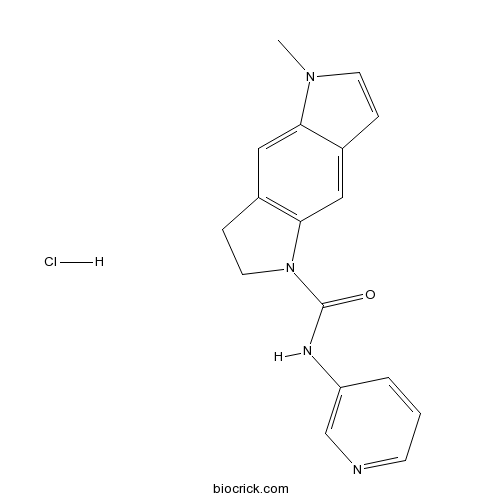
-
BCC5724
CGRP 8-37 (human)
HCGRP-(8-37) is a human calcitonin gene-related peptide (hCGRP) fragment and also an antagonist of CGRP receptor.
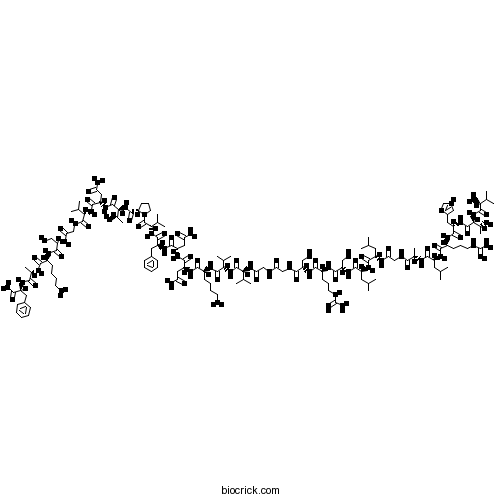
-
BCC5390
INT-777
INT-777 is a potent TGR5 agonist with an EC50 of 0.82 μM.
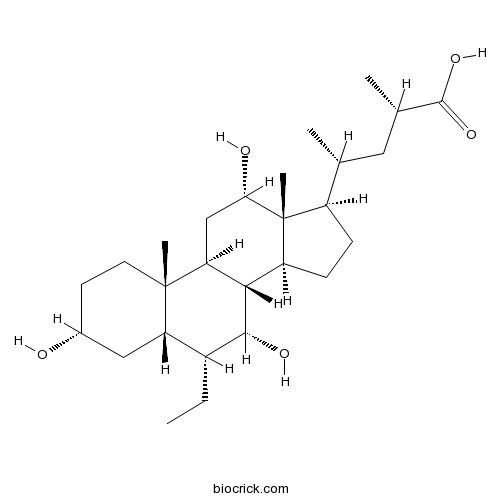
-
BCC5791
CRF (6-33)

-
BCC1475
CGS 21680
CGS 21680 is a selective adenosine A2A receptor agonist, with a Ki of 27 nM.
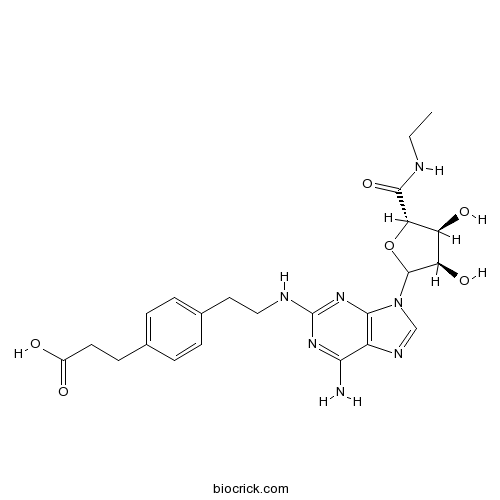
-
BCC2035
Verlukast
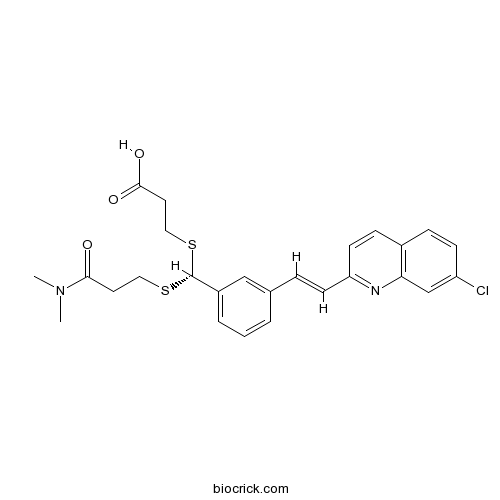
-
BCC1965
SRT3109
SRT3109 is an antagonist of CXCR2, with a pIC50 of 8.2, and used in the research of chemokine mediated diseases.
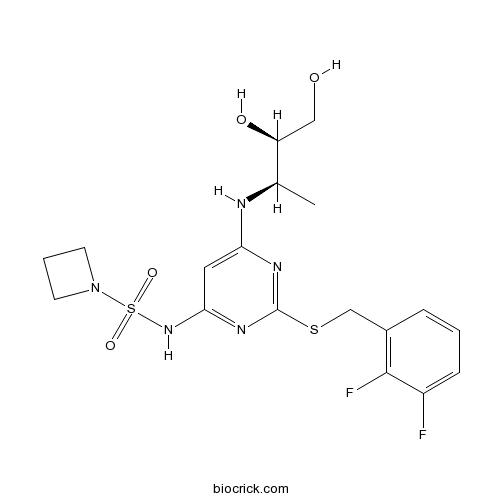
-
BCC1966
SRT3190
SRT3190 is an antagonist of CXCR2, used in the research of chemokine mediated diseases.
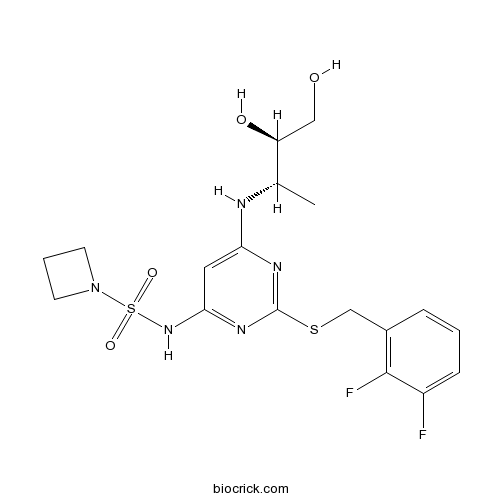
-
BCC7807
WAY 208466 dihydrochloride
